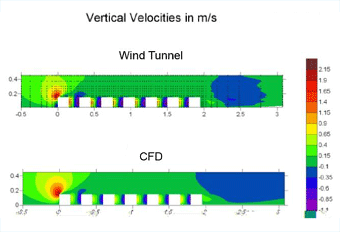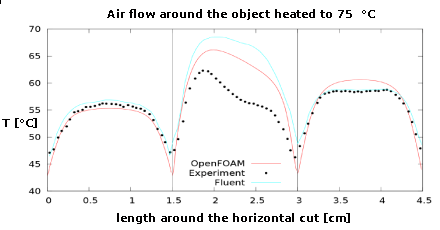
The bridge story
You might think your business and R&D doesn´t have anything in common with CFD. You might be wrong.

Let us demonstrate it with an example. In 1940, one of the biggest engineering failures in history happened in Tacoma, United States. After only 4 months from opening, the bridge which cost $6.4M (approx. $100M in present value) collapsed due to strong wind.
Fundamental design error was the failure to take into account the resonant vibrations in the structure due to aerodynamic forces. Construction of the new bridge has been tested in the wind tunnel to investigate the potential effects of the wind and this approach to testing has become the standard for all future designs of bridges.
The dramatic increase in computing power meant especially during the last 20 years a fundamental change for the analysis of fluid dynamics – the so far exclusive position of experimental methods have been shaken by the advent of software alternatives and CFD – Computational Fluid Dynamics – is gaining increasing attention in both academic and business circles.
The last decade has already seen a tremendous growth in CFD, funds invested into this area increase every year by tens of percent. CFD means no longer mathematical fireworks without meaningful purpose but rather brings an elegant and economical alternative to standard methods of development in fluid dynamics, where until recently even the big brands could not do without production of complex and costly prototypes and testing in wind tunnels. Available technology streamlines development demonstrably and furthermore significantly reduces the price of the final output and thus becomes a key competitive advantage.
Although the dominant users of CFD are still three key industries – automotive, aerospace and turbomachinery – its popularity rapidly grows in many others, such as energy, HVAC, civil engineering, environmental analysis or pharmacy.

OpenFOAM® Toolbox - trend in Computational Fluid Dynamics
OpenFOAM® is rewriting history of Computational Fluid Dynamics (CFD), let us introduce you some OpenFOAM® benefits

Although our engineers handle computations on a number of commercial software, our flagship is and will undoubtedly be an open source OpenFOAM® technology.
Many years of experience confirmed that we bet on the right horse – all existing studies and trends point to the fact that it is the OpenFOAM® which thanks to its sophistication, wider field of possibilities and finally zero price tag is gaining fame and support across the CFD community and quickly made its way to the position of market leader at the expense of many commercial softwares such as ANSYS Fluent®.
Overview of the main benefits - OpenFOAM®:
- Technologically equivalent to commercial solutions - in the right hands OpenFOAM® gives even more accurate results, see chart above.
- Ability to create individualized solutions - unlike commercial software OpenFOAM® offers great scope for custom development. This allows you to have CFD solutions literally tailored to your specific development, your product portfolio.
- Totally free - no licensing fees, unlimited number of users, jobs & cores
- Able to quickly achieve accurate results – refining of results compared with experiment is significantly faster.
- Easy automation - "push button solution" - we can set up for you a fully automated solution based on the platform of OpenFOAM®
- Still open source but with a commercial entity in the back - the company OpenCFD, the main developer of OpenFOAM®, was bought by ESI, which is committed to continue funding the development, while maintaining the open source nature of this technology. This eliminates the fear of problem support.
- The best for last – With OpenFOAM®, we record approx. 40% reduction in costs associated with CFD on average after its deployment at the customer's site.
PARTNERS















Please contact us for further information.
